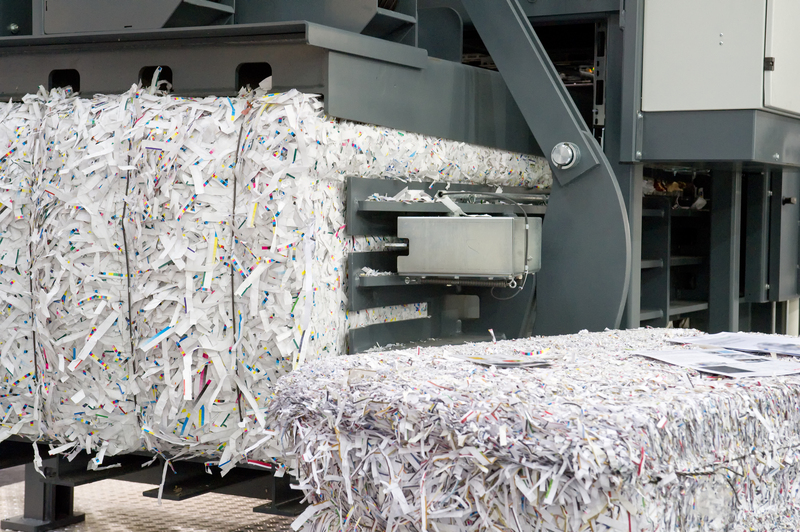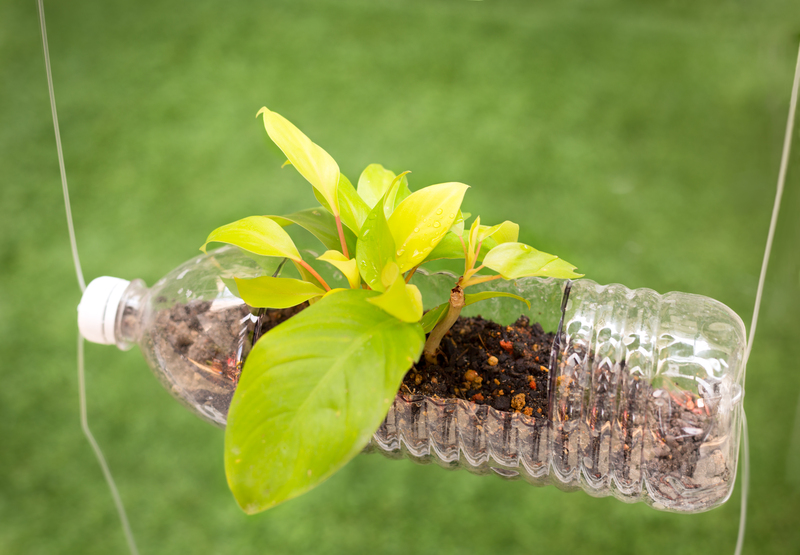PPE Waste Disposal: What You Need to Know to Do It Right
The surge in demand for personal protective equipment (PPE) during recent global health crises has brought a new environmental and safety challenge: PPE waste disposal. From face masks and gloves to gowns and face shields, millions of single-use items are discarded every day. How do you dispose of PPE waste properly? What steps must you take to ensure both environmental safety and compliance with regulations? In this comprehensive guide, we answer all your questions about PPE disposal best practices--from risks and regulations to practical tips and green alternatives.
What Is PPE Waste?
Personal Protective Equipment (PPE) refers to items worn to minimize exposure to health and safety hazards. Common examples include:
- Disposable face masks
- Respirators and N95 masks
- Gloves (nitrile, vinyl, or latex)
- Protective gowns or coveralls
- Face shields and goggles
- Shoe covers and head covers
Once these items have served their intended purpose, especially if they may be contaminated, they become PPE waste. This waste can be generated in hospitals, laboratories, public spaces, businesses, and even at home. Performing correct PPE waste management is critical to minimize risks.

Why Proper PPE Waste Disposal Matters
The improper disposal of PPE has multiple negative consequences:
- Public Health Risks: Used PPE may carry infectious agents, especially during pandemics or outbreaks.
- Environmental Damage: Many PPE materials are non-biodegradable plastics. When littered or landfilled improperly, they can pollute land, rivers, and oceans.
- Legal Fines: Organizations failing to follow PPE waste disposal regulations can face heavy penalties.
- Reputation: Mismanagement of PPE waste can damage a company or institution's public image.
Safe PPE disposal isn't just legally required--it's essential for environmental stewardship and public health protection.
Types of PPE Waste
1. Infectious (Clinical) PPE Waste
This includes PPE contaminated with blood, bodily fluids, or other infectious materials, often generated in medical or quarantine settings. It is considered hazardous.
2. Non-Infectious PPE Waste
PPE used in everyday public environments--such as face masks worn on public transport or gloves used in shops--is generally non-hazardous unless visibly soiled by biohazards.
3. Reusable vs Disposable PPE
Reusable PPE items (e.g., cloth face coverings) can be washed and sanitized, while disposable PPE is meant for single use and requires proper discarding methods.
Regulations & Legal Requirements for PPE Waste Disposal
Various regulatory bodies oversee PPE waste management, depending on location and sector. It is crucial to stay informed and compliant with local, regional, and national rules.
- OSHA (Occupational Safety and Health Administration) - in the USA, sets workplace safety standards including waste handling.
- EPA (Environmental Protection Agency) - governs hazardous and municipal waste disposal methods.
- CDC Guidelines - offers specific medical PPE disposal advice for infection control.
- WHO (World Health Organization) - provides global guidance on healthcare waste.
Always check your local regulations, as PPE waste disposal requirements can differ by region and waste type.
Best Practices: How to Dispose of PPE Waste Correctly
Step 1: Segregate PPE Waste at Source
Collect PPE waste immediately after use. Set up designated, clearly labeled bins for PPE disposal in workplaces, public areas, and homes. This avoids cross-contamination.
- Use foot-operated, closed-lid bins for PPE waste.
- Color-code bins (e.g., yellow for infectious, red for hazardous waste).
- Never mix PPE waste with regular household or recyclable waste streams.
Step 2: Safe Handling of Used PPE
When removing PPE, avoid touching the exterior (which could be contaminated). Always:
- Remove gloves first, then other items.
- Do not shake or handle soiled PPE unnecessarily.
- Practice hand hygiene immediately afterward.
Step 3: Storage Prior to Collection
For workplaces and facilities, store bagged PPE waste in a secure location with restricted access. For home settings:
- Double-bag PPE waste if used by someone who is sick or quarantined.
- Seal bags tightly to prevent leaks or exposure.
Step 4: Transport and Collection
Only authorized waste collection services should handle hazardous or infectious PPE waste. Home users should follow municipal guidelines for PPE rubbish removal.
- Arrange scheduled collection with licensed providers, especially for large volumes.
- Never place PPE waste in recycling bins--it contaminates recycling streams.
Step 5: Final Treatment & Disposal
PPE waste is typically treated using methods such as:
- Incineration: High-temperature burning eliminates pathogens but has environmental trade-offs.
- Autoclaving: Steam sterilization before landfill or further processing.
- Landfill: For non-infectious PPE, landfilling remains common, but only in compliance with barriers and lining requirements.
Home vs Workplace PPE Waste Disposal
Disposing of PPE waste at home is different from doing so in medical or workplace environments. Here's how:
- For homes: Double-bag used masks, gloves, or tissues, especially if exposed to illness. Check guidelines from local councils or health departments.
- For workplaces/medical facilities: Appoint responsible staff for PPE waste management. Arrange for hazardous waste collection as required by law.
- Schools, offices, and public places should train staff and provide proper signage for safe disposal.
Never dispose of used PPE in public spaces or nature!
Environmental Impacts of Improper PPE Waste Disposal
The spike in PPE usage has led to widespread environmental issues:
- Billions of masks and gloves are found on beaches, roadsides, and waterways each year.
- PPE made from plastic polymers breaks down into microplastics harming marine and terrestrial animals.
- Open burning or unregulated disposal may pollute air, land and groundwater.
Responsible PPE waste segregation and removal directly protects ecosystems and wildlife while minimizing health risks.
Recycling and Reusing PPE: Is It Possible?
Most disposable masks and gloves are not suitable for standard recycling due to contamination and material composition (mainly polypropylene plastics). However, innovations are emerging:
- Specialized Recycling Programs: Some companies now accept PPE waste for advanced recycling or repurposing.
- Recycling Initiatives: Projects exist turning used masks into road materials or industrial fuel.
- Reusable PPE: Use washable, multi-use masks and gowns when possible to reduce overall disposal needs.
Only dispose of PPE in general waste if no separate collection exists, and never in recycling.
Tips for Minimizing PPE Waste Generation
- Choose reusable PPE where practical and safe.
- Only use disposable PPE when absolutely necessary and follow proper donning/doffing protocols to extend its lifespan.
- Educate staff, family, or the public on PPE waste reduction strategies.
- Source eco-friendly PPE alternatives (e.g., biodegradable masks or gloves made from natural fibers).
- Implement policies for the responsible distribution and use of PPE.
PPE Waste Management in Different Sectors
1. Healthcare
Hospitals, clinics, and labs are high-volume PPE users. Strict segregation of infectious and non-infectious waste is mandatory. Staff must be trained in PPE disposal procedures and use of labeled, leakproof containers. Most medical PPE is treated by incineration or autoclaving.
2. Industry & Construction
PPE used in non-clinical environments (such as engineering or construction) may not be biohazardous but often contains oil, chemicals, or particulate matter. Proper disposal prevents workplace hazards and environmental pollution.
3. Community & Public Settings
Collection bins should be placed in public spaces (e.g., malls, stations) during outbreaks, paired with education on not littering PPE.
Common Mistakes in PPE Waste Disposal
- Throwing PPE in public bins or on the street.
- Mixing contaminated PPE with recyclables or food waste.
- Handling soiled PPE without gloves or proper hand hygiene.
- Ignoring labeling or color-coding systems.
- Burning PPE waste illegally or in open areas.
Avoiding these errors ensures safer communities and a healthier planet for all.
PPE Disposal During Disease Outbreaks and Pandemics
During infectious disease emergencies, PPE waste management must be a part of your preparedness plan. Increase the frequency of waste pickup, double-bag disposable items, and deploy extra signage. Strictly separate COVID-19-related waste from regular trash streams, and follow up-to-date advice from public health agencies (CDC, WHO, etc.).
PPE Waste: Myths vs Facts
- Myth: All PPE is hazardous waste.
Fact: Only soiled or contaminated PPE is hazardous; clean, unused PPE is not. - Myth: PPE materials can be recycled like bottles or cans.
Fact: Most disposable PPE cannot enter conventional recycling due to contamination and material type. - Myth: Burning PPE at home is safe.
Fact: Open burning of plastics releases toxic fumes. Always use regulated waste treatment. - Myth: PPE can be flushed or poured down the drain.
Fact: This leads to plumbing blockages and environmental contamination.

The Future of PPE Waste Disposal
The lessons of recent years point toward innovation and environmentally-sound solutions for PPE waste management. Expect to see:
- Increased use of biodegradable materials in PPE manufacturing.
- Growth of dedicated PPE recycling programs and take-back schemes.
- Technological advances in sterilizing and reprocessing disposable PPE.
- Stronger regulations and enforcement on PPE littering and landfill disposal.
Engaging in ongoing education and staying updated with regulation ensures your PPE waste handling is always responsible and legal.
Conclusion: Doing PPE Waste Disposal Right
As we move further into the era of increased PPE usage, proper PPE waste disposal is no longer optional--it's an imperative for public health, environmental responsibility, and regulatory compliance. The key is awareness, proper segregation, safe handling, and using approved disposal channels for all types of PPE waste.
- Set up dedicated bins and educate users on correct PPE disposal.
- Never dispose of used PPE outside approved waste systems.
- Choose sustainable PPE and seek out recycling options if available in your area.
- Stay informed about changing regulations to ensure compliance and safety.
By making informed choices about PPE waste management, individuals, businesses, and communities can protect health and the planet simultaneously. Start today--dispose of PPE waste the right way!
